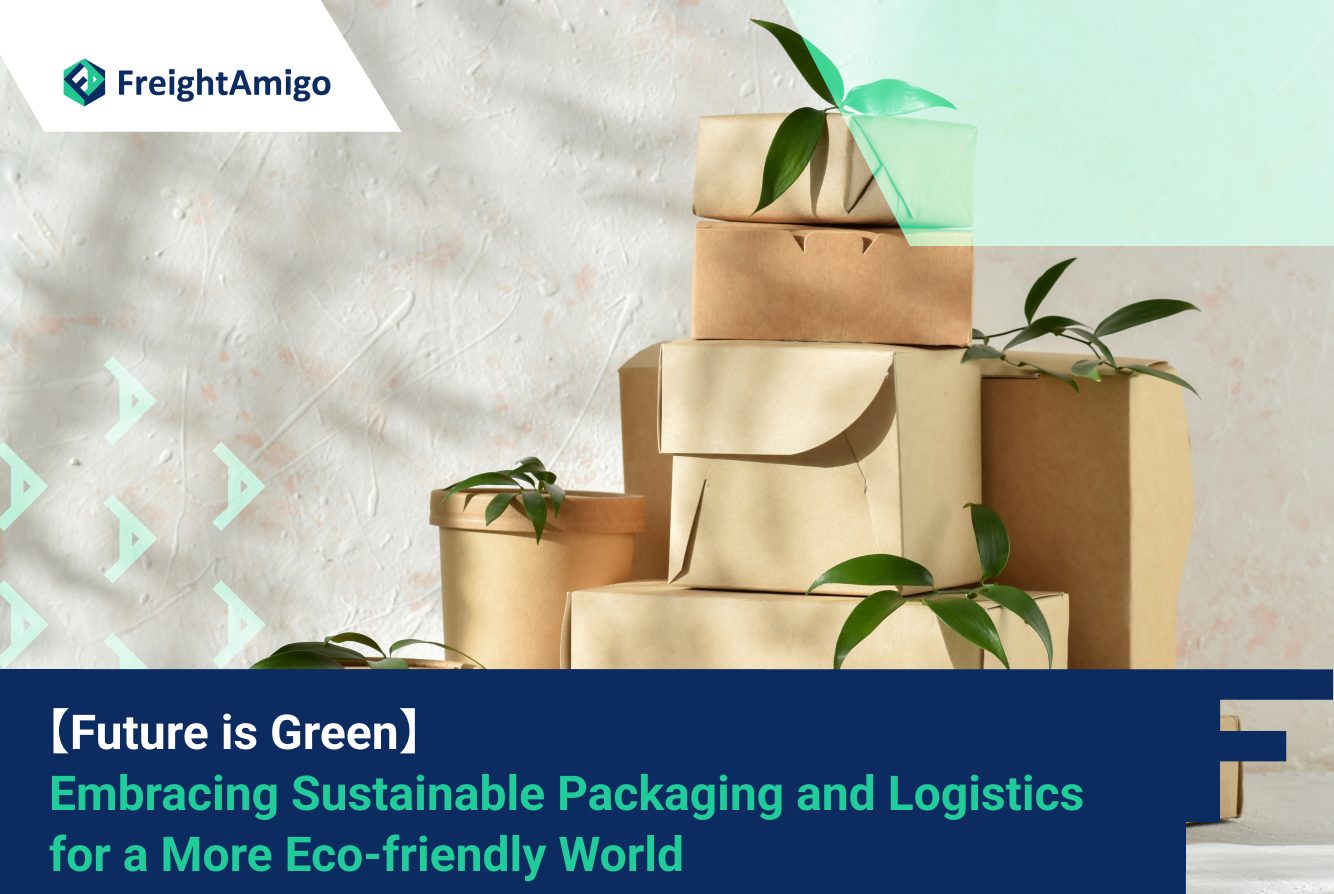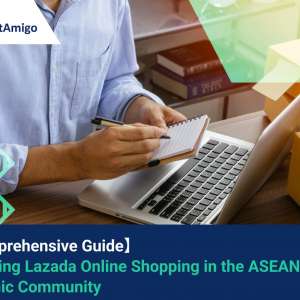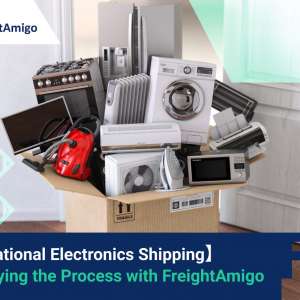Author Name: Tiffany Lee – Marketing Analyst at FreightAmigo
In the era of heightened environmental consciousness, businesses worldwide are increasingly acknowledging the urgent need for sustainability in every aspect of their operations. From product manufacturing to transportation and packaging, the demand for eco-friendly alternatives is growing stronger, driven by both consumer preference and regulatory requirements. This article delves into the concept of sustainable packaging and green logistics, exploring their benefits, various alternatives, and how they can be effectively incorporated into your business operations.
Want to compare the best Express, Air Freight, Sea Freight, Rail Freight & Trucking rates so as to have better control on cost?
Understanding Sustainable Packaging
Sustainable packaging, often seen as an eco-responsible initiative, is an approach that minimizes environmental impact and ecological footprint. It involves the use of materials and production methods that are energy-efficient, recyclable, biodegradable, and generally non-harmful to the environment. The core objective is to reduce waste, conserve resources, and contribute to a circular economy where materials are continually reused rather than discarded.
The Sustainable Packaging Coalition (SPC) offers a comprehensive definition of sustainable packaging, encompassing eight major criteria. These include being beneficial and safe for individuals and communities, meeting market performance and cost criteria, being sourced, manufactured, transported, and recycled using renewable energy, optimizing the use of renewable or recycled source materials, and being effectively recovered and utilized in biological and/or industrial closed-loop cycles.
The Business Case for Sustainable Packaging
Eco-friendly packaging not only reduces environmental impact but also offers substantial business advantages. A growing number of consumers are actively seeking products from brands that prioritize sustainability. By adopting sustainable packaging, businesses can enhance their brand reputation, differentiate themselves from competitors, and attract a customer base that values eco-conscious practices.
Moreover, sustainable practices can lead to significant cost savings through reduced material usage, optimized logistics, and improved operational efficiency. For example, lightweight, compact packaging can help lower transportation-related emissions and shipping costs. Similarly, using recyclable materials can reduce waste disposal costs and potentially generate revenue from selling recyclable waste.
A report by Nielsen revealed that 48% of consumers are willing to change their consumption habits to reduce their environmental impact, and sales of sustainable products in the U.S. have grown nearly 20% since 2014. As we move towards a greener future, businesses that embrace sustainable packaging are likely to gain a competitive advantage in the market.
Exploring Sustainable Packaging Alternatives
There are numerous eco-friendly packaging alternatives available today, each with its unique advantages and suitability for different types of products and industries. Here are some of the most common and effective sustainable packaging solutions:
- Biodegradable Packaging Peanuts
Biodegradable packaging peanuts serve as an excellent alternative to traditional Styrofoam peanuts. Made from organic materials like cornstarch, these packaging fillers decompose naturally over time, reducing landfill waste.
- Corrugated Bubble Wrap
Corrugated bubble wrap is a sustainable alternative to traditional plastic bubble wrap. It is made from upcycled corrugated cardboard, which is a recyclable and biodegradable material.
- Air Pillows Made from Recycled Content
Air pillows provide a great eco-friendly solution for filling voids in boxes and cushioning products. They are small bags that can be inflated and are typically made from recycled plastic, making them a more sustainable choice compared to other cushioning materials.
- Recycled Cardboard and Paper
Recycled cardboard and paper have long been a staple in sustainable packaging. They are cost-effective, widely available, and can be recycled multiple times, reducing the demand for virgin materials.
- Cornstarch Packaging
Cornstarch is a renewable resource that can be used to create biodegradable and compostable packaging materials. It’s a suitable alternative for products that require protection but are not heavy-duty.
- Mushroom Packaging
Mushroom packaging is a novel and eco-friendly packaging solution made from agricultural waste and mycelium, the root structure of mushrooms. The resulting material is biodegradable, compostable, and can be molded into various shapes.
- Seaweed Packaging
Seaweed packaging is an innovative solution that uses the gelatinous substance agar, derived from seaweed and algae. It is biodegradable and edible, making it an excellent choice for food packaging.
- Biodegradable and Recycled Plastics
While plastic traditionally has a negative environmental impact, there are now more sustainable alternatives available. Biodegradable plastics break down over time into non-toxic components, while recycled plastics give a second life to previously used plastic materials.
- Organic Ecological Textiles
Organic ecological textiles, such as organic cotton, hemp, or bamboo, are increasingly being used for packaging. They are renewable, biodegradable, and often come with the added benefit of being reusable.
- Edible Films
Edible films are a groundbreaking innovation in the food industry. They are biodegradable, reduce packaging waste, and can be consumed along with the product, offering a unique customer experience.
The Role of Freight and Courier Services in Sustainable Logistics
Freight and courier services play a crucial role in green logistics. By optimizing their operations for fuel efficiency, using renewable energy sources, and implementing waste reduction strategies, these services can significantly reduce their carbon footprint. For instance, air freight generally has a higher environmental impact than sea freight or courier services due to the high energy consumption and carbon emissions associated with air travel. Thus, businesses should consider their logistics options carefully and opt for the most eco-friendly choice wherever possible.
Navigating the Change: Implementing Sustainable Packaging and Green Logistics
Transitioning to sustainable packaging and green logistics may seem like a daunting task, but with careful planning and the right resources, businesses can make the switch smoothly and reap significant benefits. Here are some steps to guide your journey:
- Assessment: Start by assessing your current packaging and logistics practices. Identify areas for improvement and potential alternatives.
- Research: Stay informed about the latest trends and innovations in sustainable packaging and green logistics. Understand the pros and cons of different options and choose the ones that best fit your needs.
- Planning: Develop a detailed plan for implementing your chosen solutions. This should include timelines, budget estimates, and measures to track progress.
- Execution: Begin implementing your plan, starting with the easiest or most impactful changes. Monitor progress regularly and make adjustments as needed.
- Continuous Improvement: Sustainability is not a one-time effort but a continuous process. Always look for ways to improve your practices and stay ahead of industry trends.
Conclusion
Embracing sustainable packaging and green logistics is no longer a choice but a necessity for businesses. Not only does it contribute to environmental preservation, but it also offers significant business advantages, from cost savings to enhanced brand reputation. With the right approach and resources, businesses can make the transition smoothly and effectively, paving the way for a greener and more sustainable future.
There are different options for cargo transportation. If you want to choose the most convenient and suitable solution, it is best to have the full support of logistics experts! If you are planning to ship goods overseas, please go to the FreightAmigo page for inquiries.
===
Read More:
【Waste Reduction in the Supply Chain】 Optimizing Efficiency for a Greener Future
【Green Logistics】 Reducing Carbon Footprint in Supply Chain
===
If you have any inquiries on logistics/supply chain, feel free to contact FreightAmigo now:
Chat with us online OR
Phone : +852 28121686
WhatsApp: +852 27467829









































